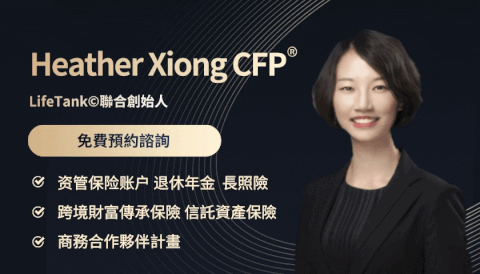(美国人寿保险指南网)在2017年12月,美国人寿保险指南网率先发布“CRS过境,您的资产还安全么?”一文,从多个角度全面解释了什么是CRS,对资产持有者有什么影响?对寿险选购的客户有什么影响等问题。
随着在2018年9月,CRS第一次进行金融账户信息交换,中国人的境外金融账户也都交换回了中国,隐形富豪变得无可遁形,中国税务部门通过这个方式可以轻松了解和掌握中国税收居民海外资产收入信息。 而从另一个角度来讲,随着特朗普“让世界中心重回美国”的口号,美国并未加入CRS的行为,反而让美国有成为了避税新天堂的趋势。
而从另一个角度来讲,随着特朗普“让世界中心重回美国”的口号,美国并未加入CRS的行为,反而让美国有成为了避税新天堂的趋势。
因此,很多中国的投资者开始将眼光放到美国,而在“新移民投资宝典(进阶版)”里,原文作者也描述了中国投资者对房地产深入人心的偏爱,再加上美国房地产市场的稳健,房地产自然而然的成为中国投资人的首选。
而对着越来越多人对美国保险产品的理解不断加强,保单也成为了金融资产配置市场的抢手货。
虽然房产和保单这两类产品,一个是砖头水泥,一个是白纸黑字,听起来差很远,但作为资产配置品来说,两者并无太多差别。最重要的是,对于大多数投资者来说,配置房产和保单,也并不冲突。但是如果非要进行一个资产配置方面优劣的对比,那结果是怎样呢?
以下节选编辑自“美国财富管理专栏”,就投资美国话题,进行的买房和买保险的对比。
编者注:首先,一切投资理财行为,最重要的5个指标永远是收益,风险,流动性,税收安排,其他限制。在进行美国的资产配置中,无论选择什么投资品,都要注意分散风险,锁定收益,通过长短周期的控制,完成收益,风险,流动性的动态平衡,达到资产增值的目的。
(>>>推荐阅读:卖房套现后,2种终身现金流退休收入方案科普 和 图标对比(图))
现金支出
买房:在加州,作为外国投资者,大约50万美金可以购置一个独立屋。受限于外国人身份的贷款批准难度和头款支付问题,比较常见的方式是全款现金买房,我们也是使用的这个计算方式。
买保险:40岁左右的女性,约$50万美元的投入,可以购置一份保额约300万美金的寿险保单。我们暂且将保费分为10年付款,每年支付5万元。
结论:买房支付50万美金,一次性全款支付。买保险每年支付5万美金,10年付清。在流动性方面,保单产品胜出。
使用价值
买房:房屋的属性就是居住。在居住的同时,享受房产增值的预期。在下一节我们会讨论对比投资价值。
买保险:保险的属性就是保障。有了这份保障,生活就会心安理得。同时这份保障还带来了价值回报。
结论:由于两者完全不同的使用属性,所以缺乏科学的可比性。从我们的角度来说,房产更多是物理层面的价值,而保单的价值更侧重于心理层面。
交易成本
买房:全款现金买房的成本大概在房价的1%左右,这些政府费用和文件包括但不限于:
- 过户公证费
- 房屋检查费
- 文件准备费
- 文件公证费
- 经纪公司的法律规范监督费
- 转户费
- 第一年的房屋保险费
$50万的房产,我们计算这个成交的费用为5000美金。
买保险:0。只受限于客户是否具备申请美国人寿保险的资格,如年龄,健康,身份许可扽等问题。保险公司只会收取第一年的5万美金保费,保费里面已经包括每年度的管理费用,并无其他费用产生。而在申请保单的过程中,执业经纪人的保单设计,顾问服务,不额外收取费用。涉及体检的时候,由保险公司安排或提供上门服务,且完全免费。
结论:无论是买房还是买保险,成交成本取决于不同的因素。
维护成本
买房:一幢50万的房子,每年需要指支出的维护费用大概是1万美金不到,包括了1-2%的房产税、物业费、房屋保险和各种房屋修葺费用。
买保险:0。您只需要向保险公司每年按时缴纳保费。
结论:由于保险和房屋具有完全不同的天然商品属性。美国房屋的维护成本不可精确预期,一旦产生,价格偏贵。而保险则没有额外维护费用。
增值收益
买房:根据凯斯席勒全美房价指数2016年底统计,美国前20大都市圈的房价平均涨幅是5.76%。房屋还有租金收入,洛杉矶地区的租金中位价格大概在1500美金左右。
买保险:视不同保险产品类型而定。目前IUL保险的演示收益率在7%左右,过去20年的标普500的平均收益率在12%左右,发行IUL保单产品的保险公司还会有一个0%的保底收益率给到客户,达到无风险的增值。
结论:无论是买房还是买保险,收益其实都是和美国及全球的经济走势挂钩的。大多数人投资房产的目的是用租金抵消每年支出,略有盈余,同时预期每年房产价值的增值,拿的是平均值为5.76%这一块。而美国寿险中,IUL保险由于其产品特殊性,给予了客户0%的托底收益率,同时还提供了2%的固定账户托底收益率,对比房屋增值均值而言,收益率更加稳定。
兑换现金
买房:对于房屋而言,最简单的兑换方式就是一卖了之,好处在于可以短时间内大额套现,但是同时作为外国人差不多要付出增值部分35%的利得税,同时还要承担6%的中介交易费用。当然,您可以用抵押房屋的形式获取现金,在负担利息的同时也不会失去房屋的所有权。
买保险:保险兑换现金的方式比较多样化,如果想一次性大额套现,客户可以选择保单质押的方式。我们更加推荐客户采用按需取款的方式来做子女的教育基金和自己的退休补贴,比如此文中的例子,45岁女性可以在65岁到90岁领取退休补贴,二十五年间共领取100万美金。
结论:相对于房屋而言,保单产品在领取现金方面更加稳定和灵活,而房屋在大额变现方面更具优势。
财富传承
买房:外国人在美国的免遗产税额度只有6万美金,因此房屋价格超过6万美金的部分,如果要传承给后代,需要缴纳40%的遗产税。
买保险:人寿保险所留给后代的钱是完全免税的,配合合理的财富配置,可以完全免掉利得税和遗产税。大多数情况下,受益人都是拿到保险赔偿金之后,可以拿钱去付继承其他财产所需要缴纳的遗产税。以文中45岁女性为例,假设在90岁的时候身故,可以给受益人留下完全免税的400万美金。
结论:人寿保险在财富传承上的优势更大,这是保险产品的天然优势。应该说美国人寿保险是财富传承不二的选择。
总结
通过对比,我们可以把规划这两种产品总结为以下两句话:
投资美国房产-是用中等流动性,换取预期中等收益和低风险的财富增值。
规划美国寿险产品-是用低流动,换取高收益和无风险的财富增值。
投资房产和规划美国保单产品,都需要每个人根据自身的时机情况来做出决策,而美国人寿保险作为一项金融工具产品,在规划时,更需要专业且深入了解美国保单运行逻辑的人寿保险财务顾问,进行以客户实际需求为中心的保单设计和配置,方能达到最优的效果。(全文完)
(>>>推荐阅读:卖房套现后,2种终身现金流退休收入方案科普 和 图标对比(图))
(>>相关阅读:“美国120年来房价的历史走势和规律”)








